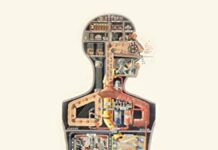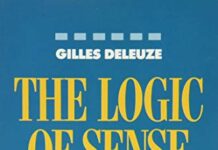
Ebook Info
- Published: 2004
- Number of pages: 160 pages
- Format: PDF
- File Size: 18.12 MB
- Authors: Gilles Deleuze
Description
The essential work on Proust–now in paperback! In a remarkable instance of literary and philosophical interpretation, the incomparable Gilles Deleuze reads Marcel Proust’s work as a narrative of an apprenticeship–more precisely, the apprenticeship of a man of letters. Considering the search to be one directed by an experience of signs, in which the protagonist learns to interpret and decode the kinds and types of symbols that surround him, Deleuze conducts us on a corollary search–one that leads to a new understanding of the signs that constitute A la recherche du temps perdu. In Richard Howard’s graceful translation, augmented with an essay that Deleuze added to a later French edition, Proust and Signs is the complete English version of this work. Admired as an imaginative and innovative study of Proust and as one of Deleuze’s more accessible works, Proust and Signs stands as the writer’s most sustained attempt to understand and explain the work of art.
User’s Reviews
Editorial Reviews: From Library Journal In the 1972 edition of this book, which makes up the first part of this title, Deleuze examines signs emitted by persons and events in Marcel Proust’s In Search of Lost Time. In one interesting chapter, “The Secondary Role of Memory,” Deleuze illustrates how voluntary memory interprets inaccurately the signs to be deciphered. The jealous lover, for example, cannot accurately decipher the deceptions of his beloved. The second part of Deleuze’s book is an addition to the 1972 edition. Here, Deleuze demonstrates how Proust’s book, because of the multiplication of signs, becomes a literary machine, really three literary machines: of partial objects or impulses, of resources, and of forced moments. According to Deleuze, Proust or the narrator is the “universal schizophrenic” whose signs weave a spider web by sending out threads to the paranoiac Charlus and the erotomaniac Albertine, all “marionettes of his own delirium” or “profiles of his own madness.” This is not easy reading, but the book will prove to be very useful to literary critics or comparativists.DBob Ivey, Univ. of Memphis Copyright 2000 Reed Business Information, Inc.
Reviews from Amazon users which were colected at the time this book was published on the website:
⭐What is your passion? If you are a lover, it is your beloved–if you are a philosopher, perhaps it is Sophia (σοφία, Greek for “wisdom”). ” Life is trouble, take off your belt and look for it” says Zorba the Greek. Deleuze borrows Proust’s work of art, “In Search of Time,” to explicate the great problematic of Love as being the same problem as philosophy and the great Search not just for time, but for truth itself.The premise of Proust’s, surprisingly embraced by Deleuze, is the problem that it is in the nature of the lover and beloved to lie, the inspiration of jealousy itself, which leads to the Lovers great Search to solve this problematic, and not without the guaranteed anquish which reveals the secret.This work, published in 1964 is simultaneously a wonderful introduction to the full ouvere of Deleuze and Deleuze and Guattari, as well as a beautiful summary which should appeal to seasoned readers of Deleuze as an eternal love story. Proust and Signs is an unabashed human based love story through which Deleuze extracts a cosmological love story from Proust’s seven-volume series of novels based on Deleuze’s deeloping metaphysics. As a literary analysis, complete with meticulous referencing, “Proust and Signs” is perhaps unparalleled for specificity and profundity combined.But seasoned Deleuzian’s should not despair as already in this work Deleuze includes: the concept of the Transversal which Guattari himself embraced and helped Deleuze flesh out a non anthropocentric theory of immanence. His concept of immanence is cleverly conveyed in a section on madness as being like a spider with no eyes, nose or mouth (a veritable Body without Organs), responding to slightest vibrations as Intesive waves, a problem to which the spider leaps to the necessary place. Our Search is constructed like a web of immanence wherin the virtual and actual infinitely interact.Multiplicity and pluralism is writ all over this work and shows up most clearly in his concept of fragments–parallel but noncommunicating entities. Though not stated, fragments are the essence of what Deleuze will later develop as the molecular versus the molar. There is no multiplicity without difference, and no difference wihout multiplicity on the Search which results in works of Art.Of course what Deleuze will go on to develop as his first major philosophy of Difference and Repetition is also embedded throughout, as well as allusions to the Three Syntheses of Time, the privileging of the passive over the active processes of the faculties of thinking, sensing, imagination and memory. He clearly shows how potentially totalizing intellect always comes after signs of truth, after a shock to the faculties such as love betrayed, and that sensation bringing a break to intellect (third sysnesis in D&R) is foundational to meaning.Perhaps a central theme woven throughout is the theme of Chapter Three in “Difference and Repetition,” what is valid thinking and conceptualizing. Deleuze explicates Proust’s distinction of true thinking as distinct from interacting with a friend or with the conventional. Rather, truth is discovered through shock to the expected such as the suffering when you discover your spouse cheating with your best friend. In fact, truth arises not as mere memory or habit, or forms of representational thinking, but as “thought without image.” This difficult concept is best explicated here because it is in the noological context of how signs contribute to the highest concpet of truth as Art.While Deleuze unfortunately divides Art (percepts and affects), Science (facts and functions) and Philosophy (concepts) in “What is Philosophy?” that is not here the case, and better explicates multiplicity through stages of signs as Worldly signs but empty referrents (wasted time), Love signs as real (time lost), Sensuous signs as shocking (time regained) and finally, Art signs as ultimate (pure time) outcomes of the Search.For the beginner, this work is an appetizer, while for the veteran, it is desert. Do yourself a ‘flavor’ (madeline) and savor this Search (Cambray) for the immanence of Love.(P.S: Death is the ultimate sign of Art.)
⭐Proust and Signs: the Art of ArtWhat is your passion? If you are a lover, it is your beloved–if you are a philosopher, perhaps it is Sophia (σοφία, Greek for “wisdom”). Deleuze borrows Proust’s work of art, “In Search of Time,” to explicate the great problematic of Love as being the same problem as philosophy and the great Search not just for time, but for truth itself.This work, published in 1964 is simultaneously a wonderful introduction to the full ouvere of Deleuze and Deleuze and Guattari, as well as a beautiful summary which should appeal to seasoned readers of Deleuze as an eternal love story. Proust and Signs is an unabashed human based love story through which Deleuze extracts a cosmological love story from Proust’s seven-volume series of novels based on Deleuze’s developing metaphysics. As a literary analysis, complete with meticulous referencing, “Proust and Signs” is perhaps unparalleled for specificity and profundity combined.While Deleuze unfortunately divides Art (percepts and affects), Science (facts and functions) and Philosophy (concepts) in “What is Philosophy?” that is not here the case, and better explicates multiplicity through stages of signs as Worldly signs but empty referrents (wasted time), Love signs as real (time lost), Sensuous signs as shocking (time regained) and finally, Art signs as ultimate (pure time) outcomes of the Search.For the beginner, this work is an appetizer, while for the veteran (many reminiscences), it is desert. Do yourself a ‘flavor’ (madeline) and savor this Search (Combray) for the immanence of Love.
⭐Proust is usually examined in terms of the themes of time and memory. He is, indeed, one of the few writers who has genuinely interesting philosphical insights into these phenomenon. Deleuze, however, prefers to concentrate on the circulation of signs within Proust’s work. The apprenticeship of Marcel as a writer is conceived of as an exploration of different kinds of sign: the signs of love, the signs of bourgious life, the signs of art. Marcel is a decoder and producer of these different signs. He passes through the signs given in experience to arrive at the (superior) signs of art.As someone interested in both Deleuze and Proust, I found this book consistently stimulating. What i think is especially refreshing (and philosophically valuable) in Deleuze is his ability to generate concepts from the literary text he is reading – rather then imposing prefashioned categories onto the work. His book on Kafka is particularly rewarding in this respect.
⭐I am doing a research on Proust which is very difficult but at the same time satisfactory to read. Deleuze makes an excellent reading of Proust and the meaning behind his text by referring to the certain linguistic signs. It says a lot about the reasons or the motives of the author behind the text; in other words, the truth behind the masks of words. You must read it definitely if you really like Proust or are working on his worldview. It says a lot about the age too, the Belle Epoque.
⭐A short and rewarding study, more remarkable as a defense of Art than an analysis of Proust, per se. While Deleuze has many knowing admirers,I have generally found his work difficult and conceptually self-indulgent, despite having some background in post-modernist Fr. thought. This book I found very “approachable” since the Proustian theme grounds Deleuze’s discourse. There were still things I didn’t understand but for all that, a fascinating commentary on aspects of Proust that is, moreover, perhaps , an excellent introduction to Deleuze. Now I must go back and again try his — you name it. Not to mention a return to Proust.
Keywords
Free Download Proust and Signs: The Complete Text in PDF format
Proust and Signs: The Complete Text PDF Free Download
Download Proust and Signs: The Complete Text 2004 PDF Free
Proust and Signs: The Complete Text 2004 PDF Free Download
Download Proust and Signs: The Complete Text PDF
Free Download Ebook Proust and Signs: The Complete Text





